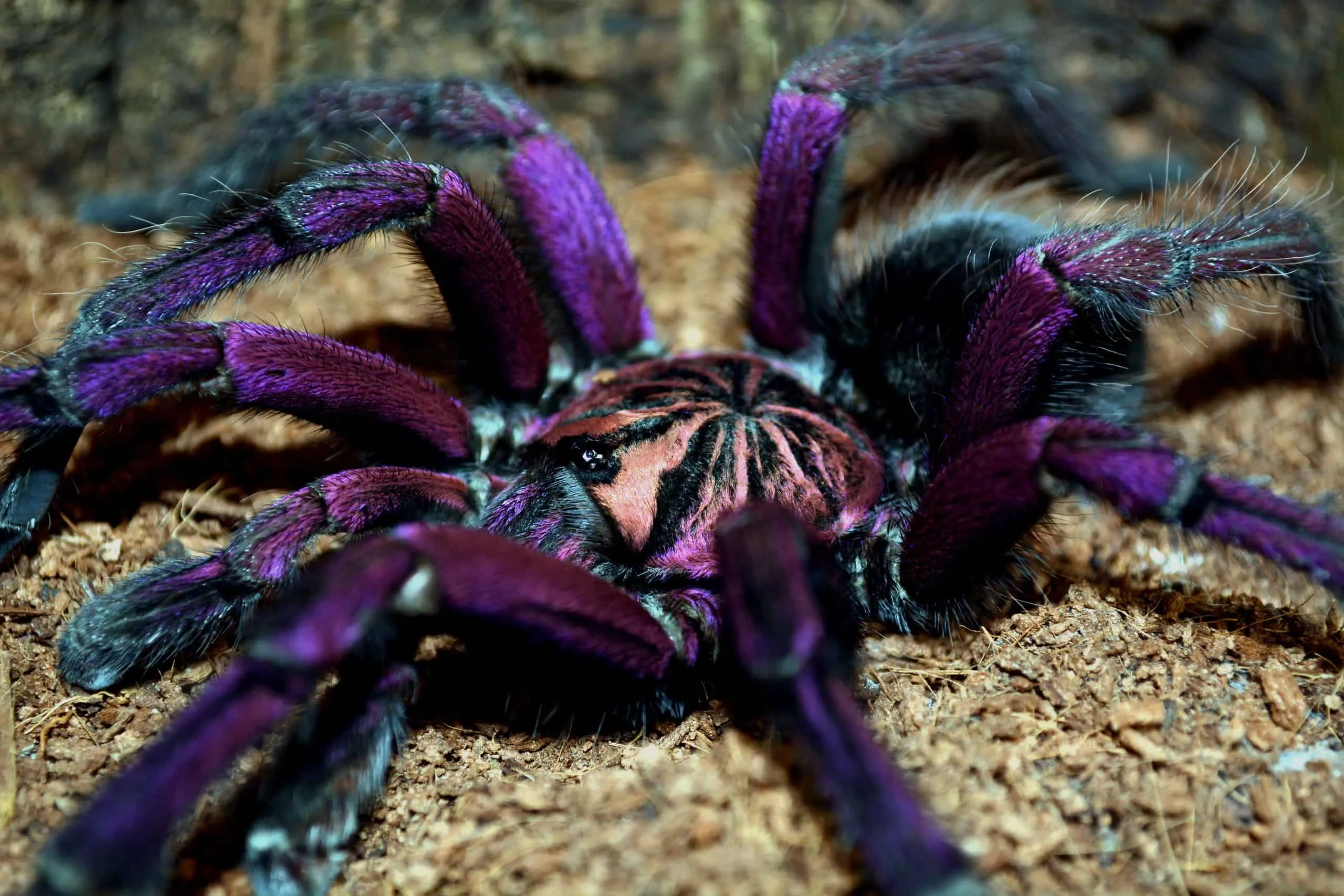Tarantulas, with their impressive size and striking appearance, have captured the fascination of many. These eight-legged creatures are not only fascinating to observe but also come in a diverse array of types, each with its unique characteristics. This article will take you on a visual journey through the world of tarantulas, highlighting five of the most captivating types. We’ll explore their appearance, habitat, and behaviors, all accompanied by stunning pictures that showcase their beauty. Prepare to be amazed by the vibrant colors, intricate patterns, and the sheer diversity found within the tarantula family. Whether you’re a seasoned enthusiast or simply curious, this guide offers a glimpse into the captivating world of these amazing creatures. So, let’s dive in and explore the fascinating types of tarantulas!
1. Brazilian Black Tarantula
The Brazilian Black Tarantula (Grammostola pulchra) is a sight to behold, with its solid black coloration that gives it an elegant and imposing presence. The deep, velvety black hue covers its entire body, from the carapace to the legs, creating a sleek and uniform appearance. They typically grow to be around 5 to 6 inches in leg span, making them a relatively large species. The Brazilian Black Tarantula’s coloration is a stunning contrast to other tarantula types, making it a popular choice for both experienced keepers and those new to the hobby. Their overall appearance is a testament to the beauty and diversity found within the tarantula world. Their calm temperament and striking looks make them a desirable species to keep.
Appearance and Characteristics
The Brazilian Black Tarantula is entirely black, from its carapace to its legs, giving it a sleek and impressive appearance. Their bodies are covered in tiny hairs, giving them a velvety texture. They are relatively large spiders, with an average leg span of 5-6 inches. They have a calm temperament, making them suitable for handling by experienced keepers. Their slow movement and docile nature contribute to their appeal as a pet. The absence of striking colors makes this species stand out because of its overall black color. Their uniformity provides a unique beauty among tarantula species, and they are overall an elegant choice.
Habitat and Distribution
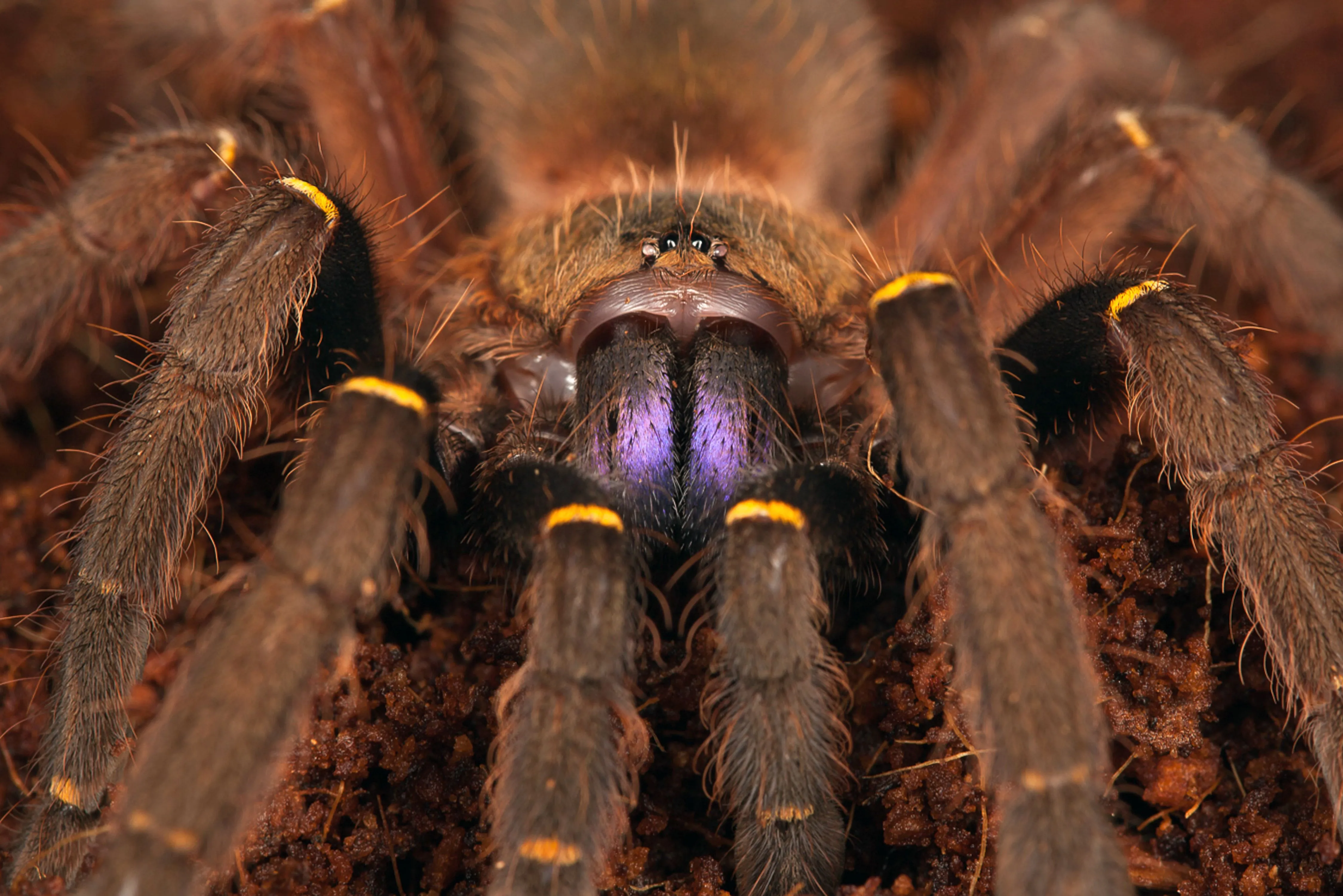
Native to the grasslands and tropical forests of Brazil and Uruguay, these tarantulas are terrestrial spiders, meaning they spend most of their time on the ground. They prefer humid environments, often creating burrows in the soil or utilizing natural shelters under rocks and fallen logs. Their natural habitat provides them with the humidity and shelter they need to thrive. In captivity, it’s essential to replicate these conditions, providing a substrate that retains moisture, such as coconut fiber or peat moss, along with a hide or burrow to mimic their natural environment. They also need a temperature range of 70 to 80 degrees Fahrenheit. Understanding their habitat is crucial for proper care and ensures the tarantula’s well-being. They are typically found in areas with dense vegetation.
2. Mexican Red Knee Tarantula
The Mexican Red Knee Tarantula (Brachypelma hamorii) is arguably one of the most recognizable tarantula species, thanks to its striking coloration and relatively docile temperament. This tarantula is a favorite among tarantula keepers, and its striking appearance makes it one of the most popular tarantula types to be kept. The most distinctive feature is the vibrant red-orange bands on its leg joints, contrasting beautifully with the black segments, giving it its name. These tarantulas are relatively large, with a leg span that can reach up to 6 inches. Their coloration and temperament make them popular in the pet trade. Their beauty is only one part of their overall appeal.
Appearance and Characteristics
The Mexican Red Knee Tarantula is characterized by its black body and striking red-orange bands on its leg joints, giving it a vibrant appearance. They have a leg span that can reach up to 6 inches, making them medium-sized tarantulas. They also have urticating hairs on their abdomen, which they can flick at perceived threats. The males and females differ in some ways. Males are typically smaller and more slender, with tibial hooks on their front legs, used for mating. Females are more robust and have a longer lifespan. Their overall appearance makes them an attractive choice for enthusiasts of the species, and their ease of care contributes to their popularity. Their coloration makes them easily recognizable.
Temperament and Behavior
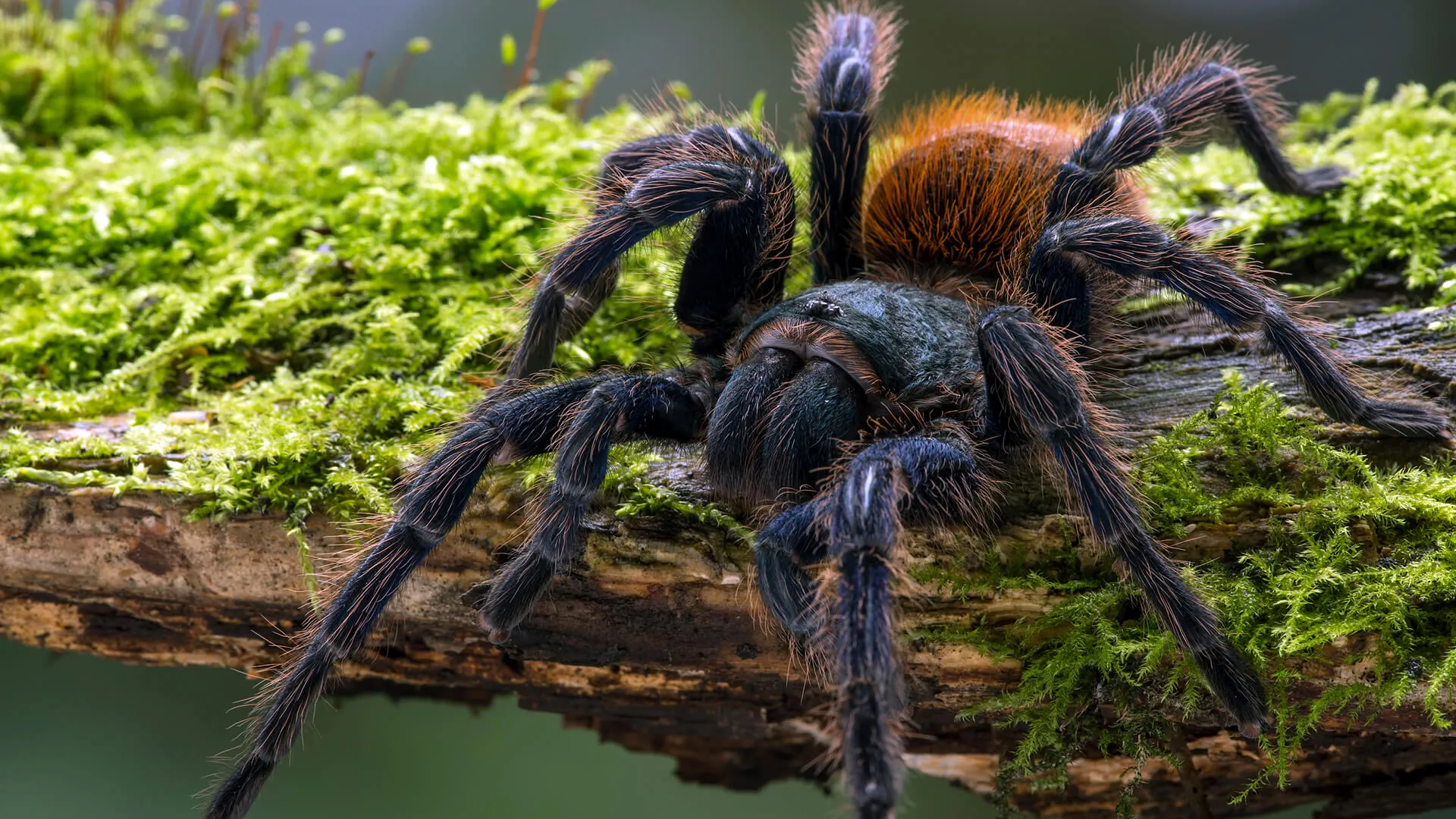
Mexican Red Knee Tarantulas are known for their relatively docile temperament, making them a popular choice for beginners. They are generally not aggressive but may flick urticating hairs if they feel threatened. They are slow-moving spiders and are not prone to biting unless provoked. It’s important to handle them with care and avoid startling them. While they are generally calm, it’s always important to respect their space and understand their potential defensive behaviors. They are nocturnal creatures and are most active during the night. They often spend their days hiding in their burrows or under shelter. Their calm temperament and predictable behavior make them an excellent species for tarantula enthusiasts.
3. Gooty Sapphire Ornamental Tarantula
The Gooty Sapphire Ornamental Tarantula (Poecilotheria metallica) is arguably one of the most beautiful tarantulas, and its striking coloration is as eye-catching as it is rare. Native to India, this arboreal species is known for its metallic blue and gold markings. Its appearance is a combination of intricate patterns and vibrant colors, making it highly sought after by tarantula enthusiasts. These tarantulas are not for beginner keepers, as they require more advanced care and handling. Their overall appearance is a testament to the diversity of the tarantula species. They are more challenging to care for than some other species.
Appearance and Characteristics
The Gooty Sapphire Ornamental Tarantula is a large arboreal species known for its stunning metallic blue and gold markings. Their carapace has a golden hue, and their legs are adorned with intricate patterns of blue, gold, and black. They can reach a leg span of up to 8 inches, making them a relatively large species. These tarantulas are easily recognizable due to their unique coloration. Their striking appearance makes them one of the most beautiful tarantulas. Their coloration and patterns are truly exceptional. They are truly a sight to behold in the tarantula world.
Care and Handling
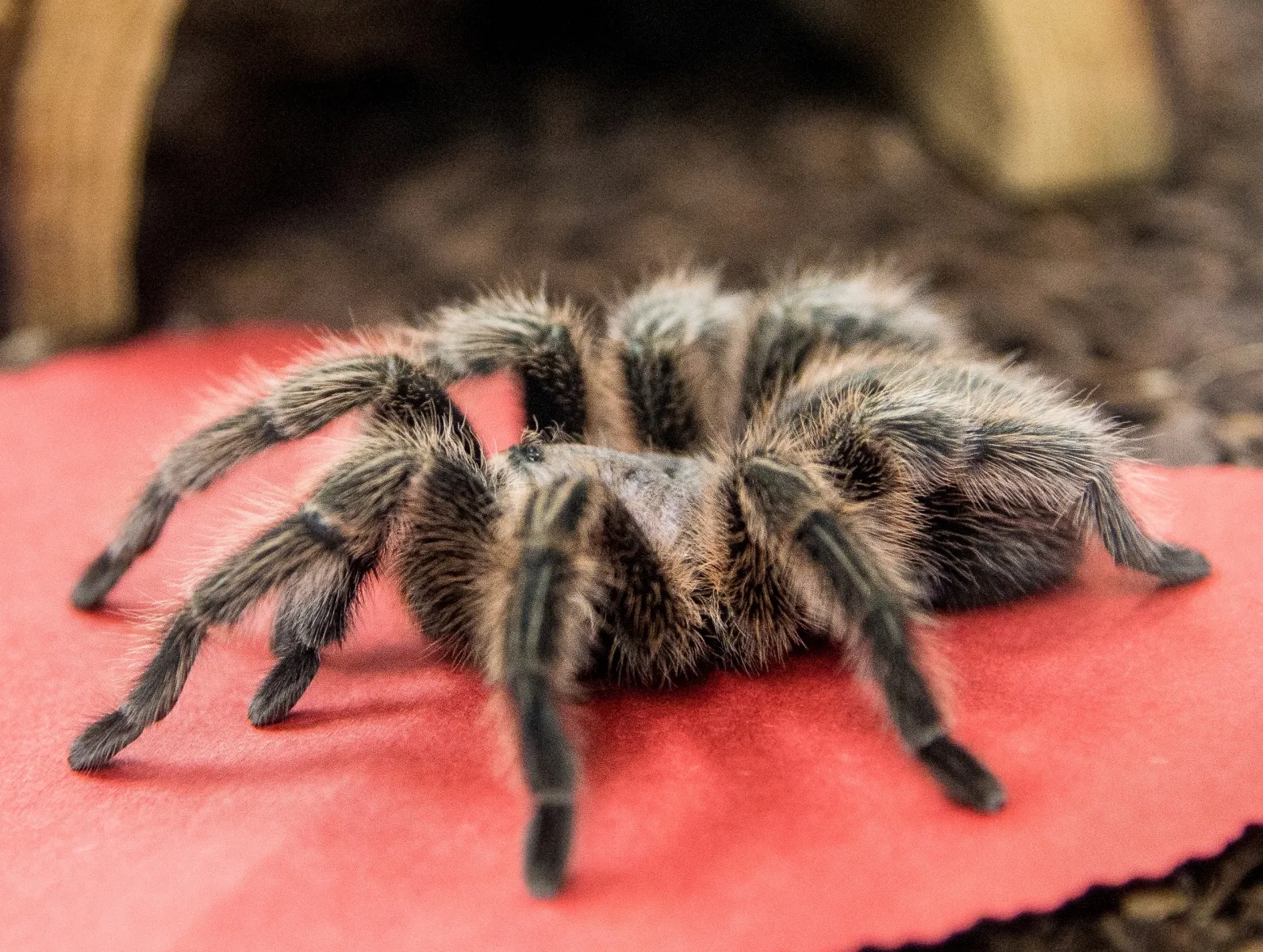
Gooty Sapphire Ornamental Tarantulas are arboreal, which means they require a tall enclosure with plenty of climbing space. They need a substrate that can hold moisture and maintain humidity, like coconut fiber or a mix of peat moss and vermiculite. These tarantulas are fast and skittish, so it is important to be cautious when handling them. They have potent venom and should be handled with extreme care. Their environment should be kept at a temperature between 75 and 85 degrees Fahrenheit. Their care is more complex than many other species. Their arboreal nature means that they thrive in a vertical environment. Humidity should be maintained at around 70-80%. They are fascinating, but should only be kept by experienced keepers.
4. Chaco Golden Knee Tarantula
The Chaco Golden Knee Tarantula (Grammostola pulchripes) is another popular tarantula type, appreciated for its beautiful appearance and relatively docile temperament. Originating from Argentina and Paraguay, this terrestrial species is known for its golden-yellow bands on its leg joints, which contrast beautifully with its black legs and body. They are a larger species, with a leg span that can reach up to 8 inches. The Chaco Golden Knee Tarantula is a favorite among keepers because of its beauty and docile nature. They are considered a good species for beginners.
Appearance and Characteristics
The Chaco Golden Knee Tarantula features a striking contrast of black legs and body, with golden-yellow bands on the leg joints. They are a robust species, and their leg span can reach up to 8 inches, making them a large tarantula. The carapace and abdomen are usually a dark brown or black color. Their coloration is eye-catching and distinctive. Their appearance contributes to their popularity. They are relatively easy to care for and gentle. The golden bands are what set this tarantula apart from other species, making it a popular choice.
Diet and Feeding
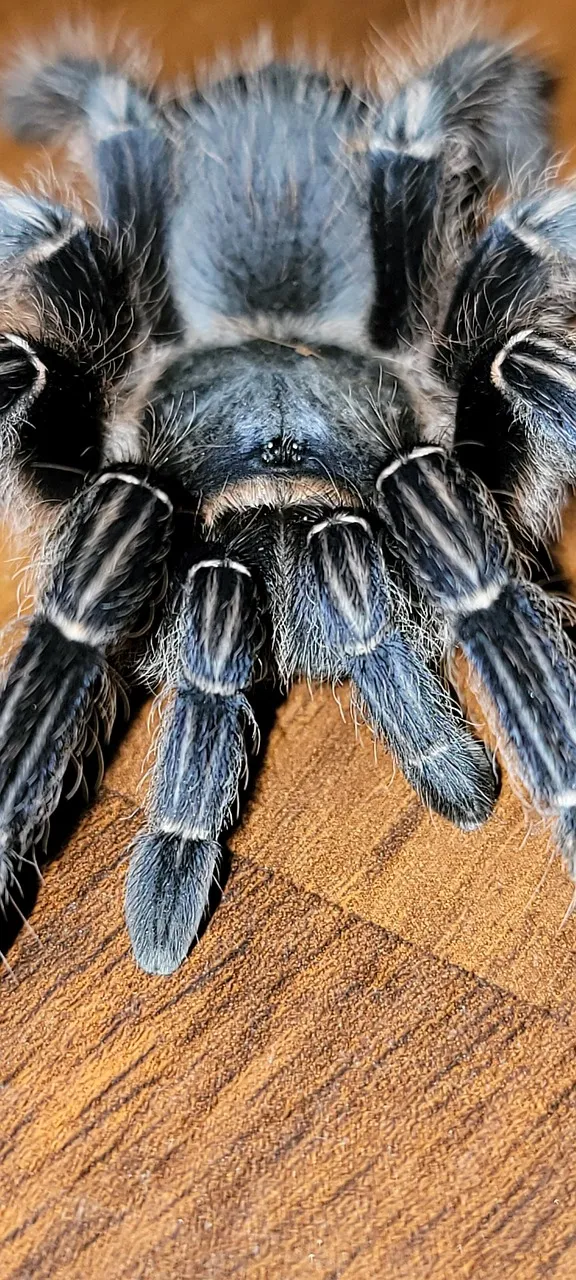
Chaco Golden Knee Tarantulas are relatively easy to feed, typically consuming a diet of insects, such as crickets, mealworms, and roaches. They should be fed 2-3 times a week, with the amount of food depending on their size and appetite. They may eat less as they approach a molt. It’s important to offer a variety of insects to ensure they receive a balanced diet. They will also consume pre-killed prey. They are voracious eaters and will typically accept food readily. Ensure fresh water is always available. Avoid feeding them too often to prevent overfeeding. A well-balanced diet will ensure their overall health.
5. Chilean Rose Hair Tarantula
The Chilean Rose Hair Tarantula (Grammostola rosea) is another popular species, favored for its gentle nature and ease of care, which makes it a fantastic choice for beginners. Native to the deserts of Chile, these tarantulas are known for their subdued coloration, with a range of brown, tan, and pink hues. Their relatively small size, typically around 5-6 inches, and docile temperament make them a suitable choice for new keepers. This tarantula is a great choice for those looking for a low-maintenance pet. Their ease of care makes them ideal. They are considered a gentle tarantula.
Appearance and Characteristics
The Chilean Rose Hair Tarantula has a subdued color palette, ranging from light brown to tan, with pinkish hairs on its legs and body. They have a leg span that can reach up to 6 inches, making them a medium-sized tarantula. Their appearance is less striking than some other species. Their calm temperament makes them popular. They are covered in urticating hairs on their abdomen. They are also known for their longevity. Their coloration is unique.
Lifespan and Breeding
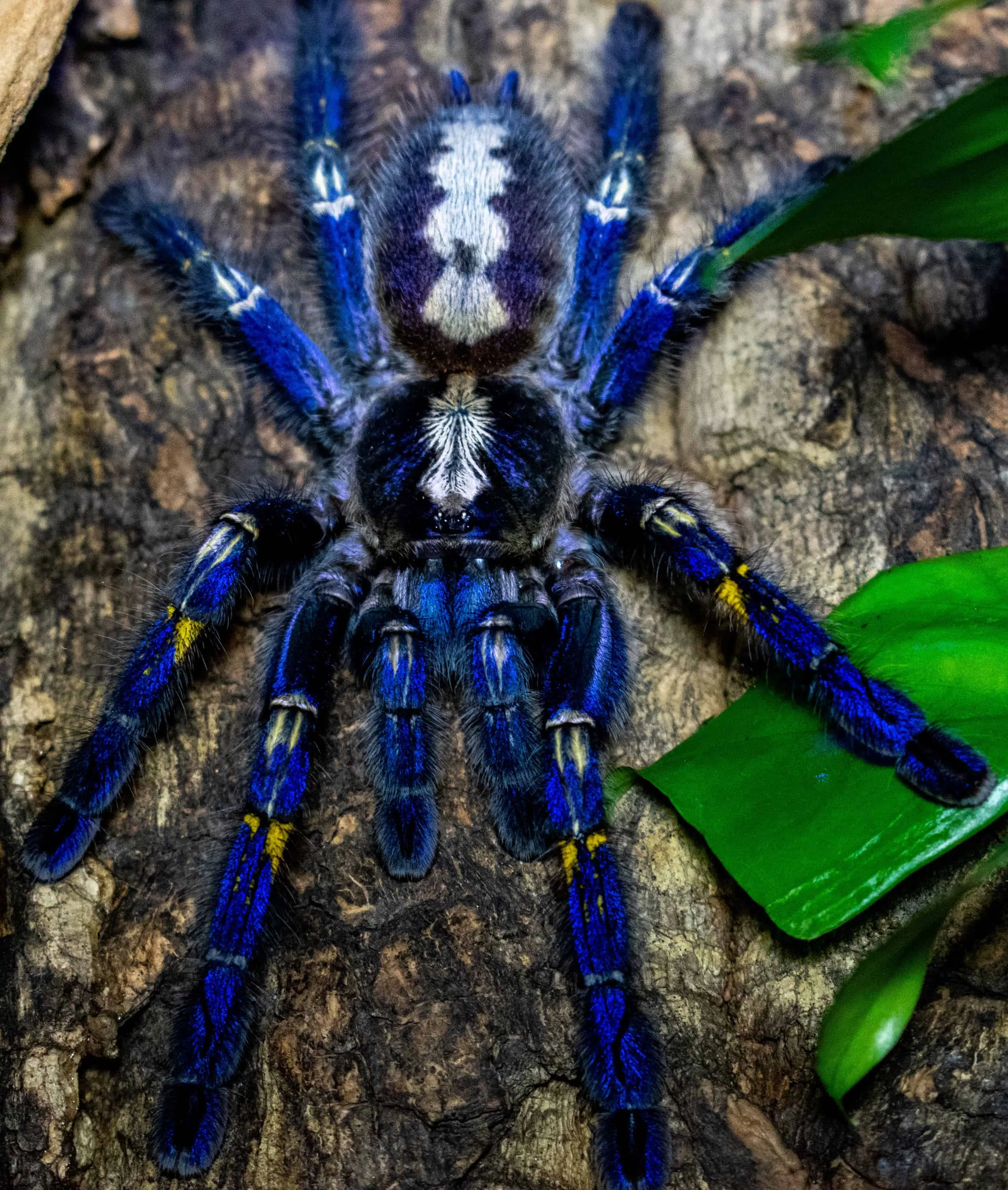
Chilean Rose Hair Tarantulas are known for their long lifespans, with females often living for over 20 years in captivity. The males typically live for a much shorter period after reaching maturity. Breeding this species can be a rewarding experience. The female will lay an egg sac containing hundreds of eggs. The young tarantulas will then hatch and begin their life cycle. They need a temperature range between 70 and 80 degrees Fahrenheit. Their long lifespan is a major reason for their popularity.
In conclusion, the world of tarantulas offers a vast array of beauty and diversity, from the Brazilian Black’s sleek elegance to the Gooty Sapphire’s dazzling colors. Whether you are captivated by the vibrant patterns of the Mexican Red Knee or the gentle nature of the Chilean Rose Hair, there is a tarantula to spark every interest. These five examples are just a glimpse into the fascinating world of tarantulas, and each one presents its unique characteristics, habitat requirements, and temperaments. Remember to always research a species thoroughly before keeping them, providing the appropriate environment for their needs. With proper care and respect, these amazing creatures can be fascinating and rewarding pets.
